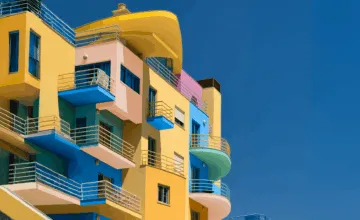Celebrating the 75th Anniversary of LA’s Iconic Union Station
07/14/2014 | Dunn Edwards |
Completed in 1939, before the popularity of air or automobile travel, Union Station was the hub of entry to Los Angeles. Because of its grand scale, it soon became known as the “Last of the Great Railway Stations".
![]()
The station, located where Chinatown meets downtown LA, is the epicenter for central and regional train travel. Today about 60,000 people pass through the station daily, and The LA County Metropolitan Transportation Authority (a.k.a. Metro) says it has great plans for the station they bought in 2011.
Famed architect John Parkinson and his son Donald designed the Mission Revival-style building. The simple Spanish exterior juxtaposed with an ornate inside, and the travertine tiles and mahogany walls cost the large sum of $11 million. For 1939, it was an extremely modern piece of urban design, and distinctly Southern Californian in style.
![]()
What's interesting about the architectural design is that the Parkinsons did not want Union Station to have the bustle and noise that was common in so many other train stations. The interior was air-conditioned, with ticket booths far away from the many armchairs for travellers. No billboards were allowed in or around the station, and the clock tower was built without chimes, to keep noise and fuss to a minimum.
Today Union Station is freshly polished and restored under the expertise of the Architectural Resources Group, with some sections still a work in progress. The inside of the station is all marble floors, huge chandeliers and oversized leather club chairs. An elegant, deep color palette sees muted greens on the wall and slate and neutral tones on the inlaid floor patterns. The Traxx bar and restaurant in the station is a nod to days past and a celebration of the golden days of rail travel.
The station's architecture and decorative is unique, and well worth a visit to walk through and imagine when the station was filled with women in their finest and men smoking cigars in the waiting area. What really makes it stand apart is the great influence it had on reshaping an area of the Los Angeles downtown back in 1939 through to present day.
The Getty Research Institute is currently holding an exhibition celebrating this cultural icon at another Los Angeles landmark, the Los Angeles Public Library. No Further West: The Story of Los Angeles Union Station, depicts the design process of the station and the politics behind it. No Further West runs through Aug. 10.
Images by Sarah Link















